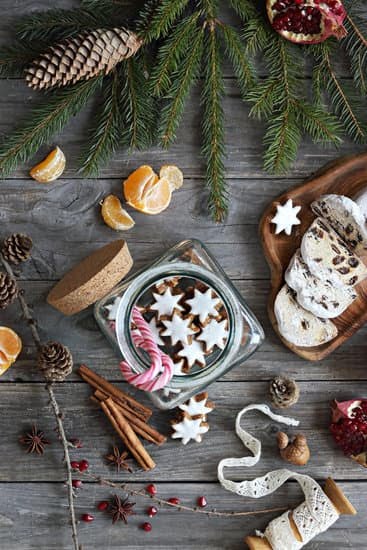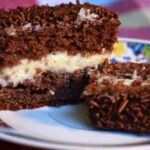Decorating cakes has become an art form in its own right, and one of the most visually stunning techniques gaining popularity is the use of sugar icing flowers. These delicate, edible decorations add a touch of elegance and whimsy to any cake, making them a favorite choice for both professional bakers and DIY enthusiasts. In this article, we will explore the world of sugar icing flowers, their types, benefits, and techniques for creating and arranging them on cakes.
Sugar icing flowers have captivated cake decorators with their versatility and ability to transform ordinary cakes into exquisite works of art. These intricate floral designs not only enhance the aesthetic appeal but also provide endless creative possibilities. The wide range of flower varieties available – from roses to daisies to tulips – allows decorators to create custom designs that perfectly complement any theme or occasion.
One of the key advantages of using sugar icing flowers is their longevity. Unlike fresh flowers that wilt over time or are affected by changing weather conditions, these edible versions stand the test of time without losing their vibrant colors or delicate textures. Whether it’s a summertime wedding cake exposed to high temperatures or a winter celebration amidst frosty conditions, sugar icing flowers remain as beautiful as ever.
In this article, we will delve deeper into the world of sugar icing flowers cake decorating. We will explore various types of these edible creations, discuss techniques for creating them step-by-step, provide tips for arranging them on cakes in stunning displays, troubleshoot common issues faced by decorators,and offer guidelines for displaying and storing cakes adorned with these delicate blooms.
If you’ve ever wanted to elevate your cake decorating skills while adding an extra touch of beauty to your creations, then experimenting with sugar icing flowers is a must-try technique. Join us on this artistic journey as we unlock the secrets behind creating breathtaking floral masterpieces that are sure to wow your family, friends, and clients alike.
Types of Sugar Icing Flowers
When it comes to cake decorating, sugar icing flowers are a popular choice for adding an elegant and eye-catching touch. These edible decorations not only enhance the overall look of the cake but also provide a versatile option for creating various designs and themes. Let’s explore the different types of sugar icing flowers and the unique techniques used to create each one.
- Roses: One of the most classic and beloved sugar icing flowers is the rose. With its intricate petals and beautiful colors, roses add a touch of romance to any cake design.
To create sugar icing roses, a special petal-shaped piping tip is used along with various shades of edible gel or dust for coloring. The technique involves piping individual petals onto parchment paper or silicone mats, allowing them to dry before assembling them into a full bloom. - Daisies: Daisies are another popular choice for sugar icing flowers due to their simplicity and versatility. These charming flowers can be created using small round piping tips in different sizes, creating layers of petals with a central yellow dot representing the pollen center. Daisies can be made in various colors, making them perfect for brightening up cakes with a playful or whimsical theme.
- Tulips: If you’re looking to add an elegant flair to your cake design, tulips are an excellent choice. Tulip sugar icing flowers are known for their distinctive shape and vibrant colors. To create tulips, decorators often use a combination of petal-shaped piping tips and leaf-shaped tips to achieve realistic-looking blooms and leaves. With their graceful curves, tulips can create a stunning focal point or be grouped together for a bouquet effect.
- Orchids: For those who prefer more exotic floral designs, orchids are an ideal option in sugar icing flower decorating. Orchids have intricate shapes and patterns that can be challenging to replicate accurately; however, with practice and attention to detail, stunning orchids can be created using specialty orchid-shaped cutters and veining tools. These flowers are commonly used for elegant, sophisticated cake designs or tropical-themed cakes.
- Sunflowers: If you’re looking for a bold and cheerful sugar icing flower option, sunflowers are the way to go. Their large, vibrant petals make them stand out on any cake.
To create sugar icing sunflowers, decorators typically use round piping tips to pipe layers of petals in a circular pattern around a central brown or black dot representing the seeds. The result is a striking flower that adds warmth and charm to cakes with a summer or garden theme.
By exploring the various types of sugar icing flowers and learning the techniques to create them, cake decorators can elevate their skills and bring their designs to life. Whether you opt for roses, daisies, tulips, orchids, or sunflowers, these edible floral decorations will undoubtedly add beauty and artistry to your cakes.
Benefits of Using Sugar Icing Flowers
Sugar icing flowers offer numerous benefits when it comes to cake decorating. Not only do they enhance the overall visual appeal of cakes, but they also provide a longer lifespan compared to fresh flowers and are capable of withstanding different weather conditions.
One of the main advantages of using sugar icing flowers is their ability to elevate the look and aesthetic of cakes. These edible decorations add an elegant and professional touch to any cake design, making it a centerpiece for special occasions such as weddings, birthdays, or anniversaries. Sugar icing flowers can be customized according to the desired color palette or theme, allowing decorators to create truly unique and personalized cakes.
In addition to their beauty, sugar icing flowers also have practical advantages over fresh flowers. Fresh flowers may wilt or lose their vibrancy over time, especially in warmer weather or with prolonged exposure to sunlight. On the other hand, sugar icing flowers maintain their shape, color, and texture for much longer periods. This makes them ideal for occasions that require cakes to be displayed for extended periods without compromising their visual impact.
Furthermore, sugar icing flowers are more versatile in terms of design possibilities compared to fresh flowers. With sugar icing, decorators have more freedom in shaping and molding various types of flowers – from roses and daisies to tulips and orchids. The flexibility in design allows decorators to create intricate arrangements and more complex floral designs that would be difficult or impossible to achieve with fresh blooms.
Overall, incorporating sugar icing flowers into cake decorating adds a touch of artistry and sophistication while providing structural durability. Their lasting beauty combined with endless design possibilities make them a popular choice among both professional bakers and enthusiasts alike.
| Advantages | Description |
|---|---|
| Enhanced Visual Appeal | Sugar icing flowers add an elegant touch to cakes and can be customized to match any color palette or theme. |
| Longevity | Sugar icing flowers maintain their shape, color, and texture for longer periods compared to fresh flowers. |
| Versatility | Sugar icing allows decorators to create intricate arrangements and complex floral designs that are difficult to achieve with fresh flowers. |
Tools and Materials for Creating Sugar Icing Flowers
Creating beautiful sugar icing flowers requires the use of specific tools and materials. Here is a comprehensive list of essential items needed for this cake decorating technique:
- Piping Bags: These disposable or reusable bags are used to hold your icing and allow for precise control when creating the details of your flowers.
- Piping Tips: There are a variety of piping tips available, each creating different shapes and textures for your flowers. Some popular tips for sugar icing flowers include the rose tip (#104), petal tip (#59s), and leaf tip (#352).
- Flower Cutters: These handy tools come in various sizes and shapes to help you create realistic flower petals. They can be used to cut out individual petals or entire flower shapes.
- Fondant or Gum Paste: Both fondant and gum paste can be used to create sugar icing flowers, with gum paste being more commonly used due to its ability to hold its shape better. These pliable mediums can be colored before or after shaping to achieve the desired look.
- Edible Dusts: Edible dusts in various colors add depth and dimension to your sugar icing flowers by allowing you to highlight certain areas, create shading, or add a touch of sparkle.
- Flower Molds: Flower molds enable you to create intricate flower designs with ease. They come in different shapes and sizes, allowing you to make consistent flower components such as centers, petals, and leaves.
- Floral Wire: Floral wire is used as a support structure for larger sugar icing flowers or when creating arrangements that require stems. It comes in various thicknesses, depending on the weight of the flower.
- Foam Pad: A foam pad provides a soft surface for thinning and shaping petals on which delicate details can be added. It helps prevent bruising while ensuring a lifelike appearance.
- Flower Formers: These plastic or silicone domes allow freshly made sugar icing flowers to dry in the desired shape, giving them a more natural appearance.
By utilizing these tools and materials, you will be well-equipped to create stunning sugar icing flowers to enhance your cake decorations. Experiment with different techniques and combinations to elevate your cake decorating skills and unleash your creativity.
Step-by-Step Guide
Creating beautiful sugar icing flowers is a skill that can greatly enhance your cake decorating repertoire. With their delicate and intricate details, these edible decorations add an elegant and artistic touch to any cake. In this section, we will provide you with a step-by-step guide on how to create stunning sugar icing flowers.
- Gather Your Materials: Before you begin creating sugar icing flowers, make sure you have all the necessary tools and materials. You will need a few piping bags with various tips for creating different petal shapes, food coloring gels or powders to achieve desired hues, a flower shaping foam pad, and floral wire for added support. Additionally, prepare a clean work surface and keep a small bowl of cornstarch or powdered sugar nearby for dusting.
- Start with the Base: To create the base of your sugar icing flower, roll a small amount of gum paste or fondant into a ball. Flatten it slightly between your palms to form a disk-like shape. This will serve as the foundation for shaping the petals.
- Shape the Petals: Take a small piece of gum paste or fondant and knead it until it becomes soft and pliable. Roll it out thinly on your work surface using a rolling pin dusted with cornstarch or powdered sugar to prevent sticking.
Using various sizes of petal-shaped piping tips or cutters, cut out petals from the rolled-out gum paste or fondant. Gently shape each petal by thinning the edges using your fingers or by placing them on a flower shaping foam pad and using a ball tool to create realistic curves. - Assemble the Flower: Take one petal at a time and position it around the base, slightly overlapping each other to mimic the natural formation of petals in a flower. Secure each layer with edible glue or water before adding another layer of petals until your desired size and shape are achieved.
- Add Details: To bring your sugar icing flower to life, consider adding additional details such as stamens or a dusting of edible color. Attach floral wire to the base of the flower if you want to create a wired flower for added stability or if you plan on arranging them in a bouquet.
Creating sugar icing flowers may take some practice, but with time and patience, you will be able to master this beautiful cake decorating technique. Remember to experiment with different colors, shapes, and sizes to unleash your creativity and make each sugar icing flower truly unique. With this step-by-step guide, you are well on your way to creating stunning sugar icing flowers that will impress everyone who sees them.
Techniques for Arranging Sugar Icing Flowers on Cakes
When it comes to cake decorating, the arrangement of sugar icing flowers can truly elevate the overall design and create a stunning visual impact. The way these delicate blossoms are placed on a cake can make all the difference in achieving a cohesive and beautiful look. In this section, we will explore various techniques for arranging sugar icing flowers on cakes.
One popular technique is creating cascading flowers that flow down the sides of the cake. This creates a whimsical and romantic effect that is perfect for special occasions such as weddings or anniversaries. To achieve this look, start by placing a large focal flower near the top of the cake and let smaller flowers or leaves cascade downwards along with some trailing tendrils. Play around with different flower sizes and colors to create depth and dimension.
Another technique is to arrange sugar icing flowers in a wreath-like pattern around the edges of the cake. This gives a natural and organic look, reminiscent of a floral crown. Start by placing one or two larger flowers at opposite ends of the cake, then fill in the space between with smaller flowers or foliage. It’s important to maintain balance and symmetry when creating this type of arrangement.
For those who prefer simplicity, a single focal flower can make a bold statement on any cake. Place this larger flower at the center of your cake and surround it with smaller complementary blooms or foliage. This technique works well for smaller cakes or minimalist designs where you want one striking element to be the star.
Experimenting with different arrangements is key to finding what works best for each individual cake design. Whether it’s cascading flowers, wreaths, or single focal flowers, mastering these techniques will allow you to create visually stunning cakes that are sure to impress.
Troubleshooting Common Issues in Sugar Icing Flower Decorating
Dealing with Cracking or Breaking Flowers
One common issue that cake decorators may encounter when working with sugar icing flowers is cracking or breaking. This can happen during the molding or drying process, and it can be quite frustrating. However, there are a few techniques that can help prevent or fix this problem.
To prevent cracking or breaking, make sure to knead your sugar icing well before starting to mold the flowers. This will ensure that the icing is pliable and less likely to crack. Additionally, avoid over-drying the flowers by storing them in airtight containers once they are fully set. This will help maintain some flexibility in the petals and reduce the risk of breakage.
If you do find yourself with cracked or broken flowers, don’t despair. You can salvage them by using a small amount of royal icing as “glue” to mend any cracks or breaks. Gently apply the royal icing to both sides of the crack or break, then press them together firmly but carefully. Hold the pieces together for a few seconds until they adhere. Allow some time for the royal icing to dry completely before handling the flower again.
Preventing Color Bleeding
Color bleeding is another common issue that occurs when using sugar icing flowers on cakes. It happens when the colors from one flower bleed onto neighboring flowers or onto the cake itself, resulting in an undesirable appearance. However, there are steps you can take to prevent color bleeding and ensure clean and vibrant designs.
One way to prevent color bleeding is by allowing each layer of colored icing to dry completely before adding another color on top. This will give each layer enough time to set and minimize any potential bleeding between colors.
Another effective technique is called “dusting.” Before applying a new color on top of an already dried layer, lightly dust a thin layer of cornstarch or powdered sugar over it with a clean, dry brush. This will create a barrier between the two colors and help prevent bleeding.
If you do experience some color bleeding despite your best efforts, try using an artist’s brush dipped in clean water to carefully blot or blend the bleeding color into the flowers or background. This blending technique can create a softer, more harmonious look that disguises any bleed marks.
Properly Adhering Flowers to Cakes
One challenge that cake decorators often face when working with sugar icing flowers is making sure they adhere securely to the cake without damaging them. The last thing you want is for your beautiful floral arrangements to come loose during transportation or shift around on the cake.
To ensure that your sugar icing flowers stay in place, use a small amount of royal icing or edible glue as adhesive. Apply a small dot of royal icing or edible glue to the back of each flower, then gently press it onto the desired spot on the cake. Hold it in place for a few seconds until it adheres.
Take care not to add too much adhesive, as it can seep out from under the flowers and become visible on the cake. Aim for just enough to provide a secure hold without compromising the overall appearance of the design.
By following these troubleshooting techniques, you can address common issues that may arise when working with sugar icing flowers. Don’t be discouraged by challenges along the way – they are part of the learning process and can lead to even more impressive creations in your future cake decorating endeavors.
Displaying and Storing Cakes with Sugar Icing Flowers
Cakes decorated with sugar icing flowers are not only visually stunning, but they also require proper care and attention when it comes to displaying and storing them. Whether you have created a masterpiece for a special occasion or simply want to showcase your cake decorating skills, understanding the best practices for displaying and storing cakes with sugar icing flowers is essential. In this section, we will provide guidance on how to properly display and store these delicate creations.
Displaying Cakes with Sugar Icing Flowers
When it comes to displaying cakes adorned with sugar icing flowers, it is important to consider both aesthetics and practicality. Here are some tips for a beautiful presentation:
- Choose an appropriate cake stand or platter: Ensure that the size and style of the stand complement the overall design of your cake.
- Position the cake in a visually appealing way: Place the cake at eye level or on a pedestal if possible. Consider using props such as fresh greenery or floral arrangements to enhance the display.
- Take lighting into consideration: Natural light is often the most flattering, so position the cake near a window or in a well-lit area. However, avoid placing it under direct sunlight as this can cause the colors of the sugar icing flowers to fade.
Storing Cakes with Sugar Icing Flowers
Proper storage is crucial for maintaining the quality and appearance of cakes adorned with sugar icing flowers. Follow these steps to ensure your creation stays fresh:
- Refrigerate before serving: If your cake contains perishable fillings, such as cream or fruit, it should be stored in the refrigerator until ready to serve. However, keep in mind that refrigeration can cause condensation which may affect the color and texture of the sugar icing flowers.
- Protect from humidity: To prevent any moisture from damaging your sugar icing flowers, place a food-safe desiccant packet inside an airtight container with the cake. This will help absorb any excess moisture.
- Avoid direct contact: To avoid damaging the sugar icing flowers, ensure that they do not come into direct contact with other items, such as plastic wrap or cake boxes. Use toothpicks or other supports to create distance if necessary.
By following these guidelines for displaying and storing cakes with sugar icing flowers, you can keep your creations looking fresh and beautiful for longer periods of time. Proper care and attention to detail will ensure that your hard work as a cake decorator is preserved until the final slice is enjoyed.
Conclusion
In conclusion, sugar icing flowers offer a unique and artistic way to decorate cakes that has been growing in popularity. These edible decorations not only enhance the visual appeal of cakes but also provide a versatile and customizable option for creating various floral designs. By exploring the different types of sugar icing flowers and their distinct features, cake decorators can expand their repertoire and experiment with different techniques to create stunning cakes.
One of the key benefits of using sugar icing flowers is their longevity compared to fresh flowers. While fresh flowers wilt and fade over time, sugar icing flowers can withstand different weather conditions and maintain their beauty for an extended period.
This makes them ideal for special occasions or events where cakes need to be displayed for longer durations. Furthermore, by utilizing the right tools and materials such as molds, piping tips, and edible dust, cake decorators can achieve intricate details and vibrant colors in their sugar icing flower creations.
Arranging sugar icing flowers on cakes offers endless design possibilities. Whether it’s creating cascading floral arrangements or focal point blooms, there are numerous techniques that can be employed to achieve stunning results. By following a step-by-step guide and troubleshooting common issues along the way, cake decorators can overcome challenges in working with sugar icing flowers and elevate their decorating skills.
Frequently Asked Questions
How to make sugar flowers for cake decorating?
Making sugar flowers for cake decorating involves a few key steps. First, gather the necessary tools and ingredients such as gum paste or fondant, food coloring in desired shades, flower shaping tools, and a rolling pin. Begin by tinting the gum paste or fondant in the desired colors using food coloring gel. Then, roll out the gum paste or fondant into thin sheets and cut out shapes using flower cutters or templates.
Use flower shaping tools to create texture and realism by thinning the edges of each petal and adding veins or patterns. Assemble the different petals together using edible glue or water to create the desired flower shape. Allow the sugar flowers to dry completely before placing them on the cake.
What kind of icing do you use for sugar flowers?
When it comes to icing for sugar flowers, royal icing is often used due to its stiff consistency that allows for intricate piping work. Royal icing is made by whisking together egg whites or meringue powder with powdered sugar until smooth and thick.
It can be further adjusted for consistency by adding small amounts of water or lemon juice as needed. The stiffness of royal icing helps maintain the delicate structure of sugar flowers while allowing for precise detailing, such as piped centers or stamen.
How to make sugar flowers icing?
To make an icing specifically for sugar flowers, a variation of royal icing called flower paste can be prepared. Flower paste has a stretchy yet pliable texture that makes it ideal for creating realistic petal shapes with thin edges. To create this type of icing, combine equal parts of gum tragacanth (a natural gum) and powdered sugar in a bowl, slowly incorporating water until it forms a thick dough-like consistency.
Knead the mixture on a clean surface until smooth, similar to kneading bread dough. Wrap it tightly in plastic wrap and allow it to rest overnight at room temperature before use so that it firms up properly, resulting in easier handling when crafting intricate sugar flowers.

Welcome to our cake decorating blog! My name is Destiny Flores, and I am the proud owner of a cake decorating business named Cake Karma. Our mission is to provide delicious, beautiful cakes for all occasions. We specialize in creating custom cakes that are tailored specifically to each customer’s individual needs and tastes.





